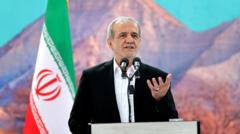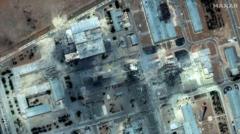The Pentagon outlines a highly classified operation targeting Iranian nuclear facilities, reflecting the shift in military strategy towards precision strikes.
**Military Operation Against Iran: A New Era of Engagement**

**Military Operation Against Iran: A New Era of Engagement**
Focus on advanced technology sets the stage for significant geopolitical changes.
In a momentous briefing at the Pentagon, senior Pentagon officials detailed a complex military operation targeting Iran's nuclear capabilities. This unprecedented strike, which they dubbed “Operation Midnight Hammer,” involved B-2 stealth bombers, fighter aircraft, and submarine-launched cruise missiles hitting key nuclear sites at Fordo, Natanz, and Isfahan. The operation was noted for its secrecy and speed, occurring over a brief 25-minute window on Saturday evening.
Defense Secretary Pete Hegseth and General Dan Caine, chairman of the Joint Chiefs of Staff, spoke to reporters regarding the intricacies of the mission. While Hegseth echoed President Trump's earlier claim that the nuclear facilities had been effectively neutralized, General Caine cautioned that a definitive assessment regarding Iran's nuclear capabilities was pending. Initial evaluations indicated catastrophic damage to all targeted sites, marking a potential turning point in U.S. military engagement in the region.
Launched from Whiteman Air Force Base in Missouri, the bombers undertook a challenging 7,000-mile journey, requiring multiple air refuelings to reach their targets. The strategic implications of these strikes suggest a more proactive U.S. military posture, potentially reshaping the dynamics of nuclear deterrence and international relations within the Middle East. Experts now anticipate a broader discussion on global security and the future of military intervention.





















